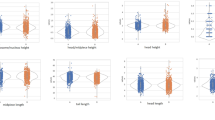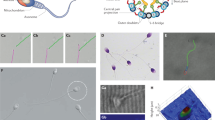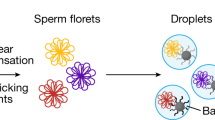Abstract
READING Dr. Shettles's first communication1 leaves one with a variety of disturbing thoughts. Should one be able to hurdle the compounded artefacts of air-dried shrinkage and phase-contrast optical aberration, there still remain the matters of interpretation and communication. Agreeing, but only for the moment, with Dr. Shettles that his Fig. 1 shows “no intermediate types”, wherein lies his evidence for specifying the “most central chromosome”, either in theory or in Fig. 3 ? Furthermore, in the light of considerable recent disagreement concerning even the extent and outline of the sperm nucleus, based on cytochemical and electron-micrographic preparations, the description of the ultrastructural pattern of nuclear arrangement seems fragile indeed. Finally, one would hope that some additional technique and confirming evidence might be supplied before assuming too hopefully that “discrete chromosomes” and the “X and Y chromosomes” can, by this method, be unequivocally recognized. I presume Fig. 3 lost some detail in reproduction.
This is a preview of subscription content, access via your institution
Access options
Subscribe to this journal
Receive 51 print issues and online access
$199.00 per year
only $3.90 per issue
Buy this article
- Purchase on Springer Link
- Instant access to full article PDF
Prices may be subject to local taxes which are calculated during checkout
Similar content being viewed by others
References
Nature, 186, 648 (1960).
Author information
Authors and Affiliations
Rights and permissions
About this article
Cite this article
BISHOP, D. X and Y Spermatozoa. Nature 187, 255–256 (1960). https://doi.org/10.1038/187255a0
Issue Date:
DOI: https://doi.org/10.1038/187255a0
This article is cited by
-
Nuclear Structure of Human Spermatozoa
Nature (1960)
Comments
By submitting a comment you agree to abide by our Terms and Community Guidelines. If you find something abusive or that does not comply with our terms or guidelines please flag it as inappropriate.



